Today’s Current Affairs: 16th July 2025 for UPSC IAS exams, State PSC exams, SSC CGL, State SSC, RRB, Railways, Banking Exam & IBPS, etc
Table of Contents
Kanwar Yatra:
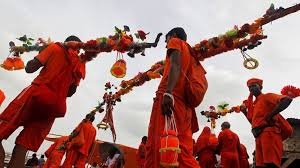
Delhi Chief Minister recently said no nuisance will be tolerated during Kanwar Yatra, days after glass shards were found scattered along a stretch of the yatra route in Shahdara.
- It’s an annual pilgrimage, held in the Hindu month of Shravan (typically July–August), where Shiva devotees (known as Kanwariyas), primarily in North India, fetch holy water from the Ganges River and carry it back to their local Shiva temples (often barefoot and walking distances of hundreds of kilometers).
- They visit the temples to offer holy water to Lord Shiva, especially on the auspicious day of Shivratri during the month of Shravan.
- The term “Kanwar” refers to a special carrying apparatus, typically a bamboo pole, with two equal loads (usually pots filled with Ganga water) suspended from either end.
- This pole is balanced on the pilgrim’s shoulde “Yatra” simply means a journey or procession.
- Thus, the Kanwar Yatra literally means the “journey with the Kanwar.”
- The core ritual of this pilgrimage is to collect sacred water, known as “Gangajal,” from River Ganga, particularly from places like Haridwar, Gaumukh (the source of the Ganges glacier), Gangotri in Uttarakhand, and Ajgaibinath Temple in Sultanganj, Bhagalpur (Bihar).
- The devotees then return by carrying Ganga water in kanwars to seek the blessings of Shiva.
- The water is offered to Shiva temples, including the 12 Jyotirlingas across India and other shrines like the Pura Mahadev Mandir and Augharnath in Uttar Pradesh, the famous Kashi Vishwanath temple, and the Baba Baidyanath Temple in Deoghar, Jharkhand. The ritual is known as Jal Abhishek.
- Devotees often carry the holy water to offer at temples in their towns and villages.
- Many pilgrims believe that once the pot is filled with holy water, it should not touch the ground.
- While carrying the water, devotees walk barefoot; some complete the pilgrimage by lying flat on the ground. Modern times have seen some adaptations, with some using cycles, motorbikes, or even vehicle convoys for parts of the journey, though the purists still prefer walking.
- Kanwariyas typically dress in saffron-colored robes, a color associated with renunciation and spirituality in Hinduism.
- Many observe fasts during the pilgrimage, and the consumption of food, water, and salt is restricted.
Pradhan Mantri Divyasha Kendra:
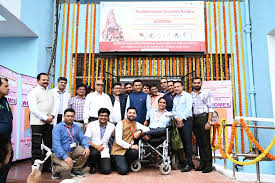
The Union Ministry of Social Justice & Empowerment, Government of India, is set to inaugurate the 75th Pradhan Mantri Divyasha Kendra (PMDK) at Government Medical College, Badaun, Uttar Pradesh.
- It is a unique initiative aimed at providing integrated services under one roof—including assessment, evaluation, counselling, distribution, and post-distribution care—for eligible Divyangjan (persons with disabilities)and elderly beneficiaries.
- These centres are being established through ALIMCO (Artificial Limbs Manufacturing Corporation of India), a Central Public Sector Undertaking under the Department of Empowerment of Persons with Disabilities (DEPwD).
- The newly established PMDK at Badaun would provide assistive aids and appliances under the ADIP Scheme for Divyangjan and the Rashtriya Vayoshri Yojana (RVY) for senior citizens.
- Devices such as tricycles, wheelchairs, hearing aids, walkers, artificial limbs, and mobility support accessories would be offered free of cost to eligible beneficiaries.
- The initiative has already benefited over 1.40 lakh individuals with assistive devices worth more than ₹179.15 lakh.
- It significantly reduces the travel and logistical challenges faced by local beneficiaries, offering them accessible, dignified, and timely services at the regional level.
RhoDIS India Programme:
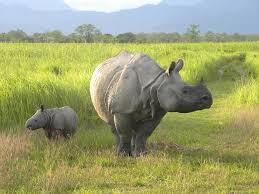
A specialised team has initiated the genetic analysis of samples collected from 2,573 rhino horns and will add them to the RhoDIS India DNA data library.
- The Rhino DNA Index (RhoDIS) System is a wildlife forensics tool that was specially developed for investigating wildlife crime cases.
- In 2016, the Ministry of Environment, Forests and Climate Change (MoEFCC), Government of India in partnership with Wildlife Institute of India (WII), the Forest Departments of Assam, West Bengal and Uttar Pradesh and WWF India launched this programme.
- The programme seeks to improve the crime investigations scientifically and provide technical support for the scientific management of India’s rhino population.
- The protocol standardised for the RhoDIS India analysis, approved by the Ministry of Environment, Forest, and Climate Change, will be followed for creating the DNA profiles from these samples.
- RhODIS uses a DNA indexing system whereby genetic sequences are created to get a signature unique to each individual rhino
- It has proven to be a successful tool in aiding crime investigation and strengthening legal presentations.
Software Technology Parks of India:
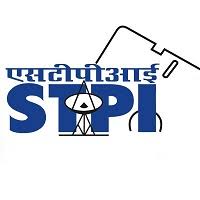
The Software Technology Parks of India (STPI) is expanding beyond traditional metro hubs to promote inclusive IT growth, focusing on Tier 2 and 3 cities.
- It aims to encourage entrepreneurship in software, business process management, and product innovation to build India’s largest tech startup ecosystem under the National Policy on Software Products (NPSP) 2019.
- Established in 1991, the STPI is an autonomous society registered under the Societies Registration Act, 1860.
- It was set up under the then Department of Electronics (now Ministry of Electronics & Information Technology) to implement the Software Technology Park (STP) and Electronics Hardware Technology Park (EHTP) schemes.
- It provides high-speed data communication, incubation facilities, and supports start-ups across India through initiatives like Centres of Entrepreneurship (CoEs) and the Next Generation Incubation Scheme (NGIS).
- Achievements: Currently operating 67 centres, with 59 in non-metro locations, STPI created 17 lakh sq. ft. of incubation space to support startups and MSMEs in smaller towns.
Astra Missile : In News
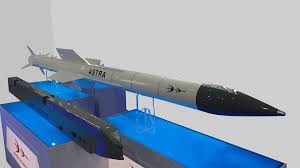
The DRDO and Indian Air Force (IAF) has successfully test-fired the indigenous Beyond Visual Range Air-to-Air Missile (BVRAAM) ‘Astra’ with an indigenously developed Radio Frequency (RF) Seeker from a Su-30 Mk-I fighter aircraft off the coast of Odisha.
BVRAAM Astra:
- Astra is India’s first indigenous BVRAAM, designed to target enemy aircraft beyond line-of-sight.
- It is equipped with a DRDO-developed indigenous Radio Frequency (RF) Seeker, which enables the missile to detect, track, and lock onto targets using radar, ensuring high accuracy in the terminal phase.
- Astra is India’s first indigenous BVRAAM, capable of engaging supersonic, manoeuvrable targets beyond 100 km and up to 20 km altitude.
- Uses inertial navigation, mid-course data link updates, and active radar homing, with a smokeless solid-fuel engine for enhanced stealth.
- Equipped with a DRDO-developed active RF seeker, enabling fire-and-forget and buddy launch mode, where one aircraft launches and another guides.
3rd edition of Trade Watch Quarterly for FY 2024-25:
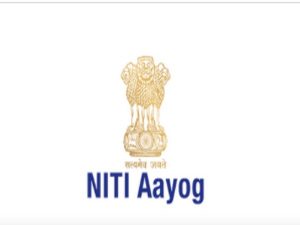
NITI Aayog (National Institution for Transforming India) released the 3rd edition of its Trade Watch Quarterly report for Q3 of FY 2024–25 (October to December 2024). It offers a comprehensive analysis of India’s trade trends.
Key Findings of the Trade Watch Quarterly Report for Q3 of FY 2024–25:
- India’s merchandise exports grew by 3% in Q3 FY25, reaching USD 108.7 billion.
- Imports rose by 6.5%, totaling USD 187.5 billion.
- India’s services surplus amounted to USD 52.3 billion, driven by a 17% increase in services exports, reflecting the growing strength of India’s services sector on the global stage.
- High-tech products like aircraft, spacecraft, and parts saw a remarkable 200% growth year-on-year, further diversifying India’s export composition.
- Exports like electrical machinery and arms/ammunition are growing rapidly.
- These have expanded at a 10.6% compound annual growth rate (CAGR) since 2014
- India ranked 5th globally with USD 269 billion in Digitally Delivered Services (DDS) exports in 2024.
- The Q3 edition highlights shifts in US trade policies, creating both risks and opportunities. India has a tariff advantage over key competitors in the US, which opens up growth potential in sectors like pharmaceuticals, textiles, and electrical machinery.
Exercise Talisman Sabre 2025:
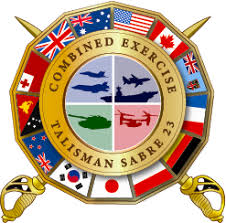
India, for the first time, is participating in the 11th edition of Exercise Talisman Sabre 2025, a major Australia-led multinational military exercise.
- Exercise Talisman Sabre, launched in 2005 and held biennially, began as a bilateral military drill between Australia and the US and has since evolved into a major multinational warfighting exercise involving key Indo-Pacific partners apart from European partners.
- The 11th and largest-ever edition of this exercise involves over 35,000 military personnel from 19 nations, including Australia, US, India, Japan, France, UK, and others, showcasing enhanced multinational coordination and capability.
- Conducted across Queensland, Northern Territory, Western Australia, New South Wales, and Christmas Island, with first-time extension to Papua New Guinea, marking expanded regional engagement.
- It aims to promote a free, open, and inclusive Indo-Pacific, enhance military readiness, interoperability, joint operational capability and reinforce the regional security architecture among allied nations.
Centre’s Exemption Policy for Thermal Plants:

The Union Environment Ministry has exempted 78% of India’s thermal power plant units from installing Flue Gas Desulphurisation (FGD) systems meant to reduce SO₂ emissions.
- The Ministry of Environment, Forest and Climate Change (MoEFCC) issued new norms based on a scientific advisory panel led by the Principal Scientific Adviser.
- The new framework classifies power plants into three categories based on location and pollution levels.
- FGD is a pollution-control system used in coal-fired thermal plants to reduce sulphur dioxide (SO₂) emissions.
- It removes SO₂ by passing flue gases through a scrubber with limestone or chemical sorbents.
- SO₂ can otherwise form secondary PM2.5 and lead to acid rain, respiratory diseases, and ecosystem damage.
The Exemptions:
Category A (11%):
- Located within 10 km of NCR or cities with >1 million population.
- Must install FGDs by December 30, 2027.
Category B (11%):
- Located near critically polluted areas (CPA) or non-attainment cities (NAC).
- FGD installation subject to expert review; deadline: December 2028.
Category C (78%):
- Located outside high-risk zones.
- Completely exempt from installing FGDs.
India is set to receive the first batch of AH-64E Apache:
India is set to receive the first batch of AH-64E Apache attack helicopters from the US after a 15-month delay.The helicopters will be deployed at Jodhpur for border security operations.The AH-64E Apache is a multi-role combat helicopter developed by Boeing, built for high-intensity warfare, especially in network-centric and multi-domain environments. It is one of the most advanced and lethal attack helicopters in the world. Developed By: Manufacturer: Boeing, USA.
Lok Sabha Digital Attendance:
From the Monsoon Session starting July 21, Lok Sabha MPs will digitally mark attendance from their seats using the new Multimedia Device (MMD) system.The system is a seat-based digital attendance mechanism introduced in Lok Sabha, enabling Members of Parliament (MPs) to register their presence directly through biometric or PIN verification via the Multimedia Device (MMD) installed at each seat. Developed By: Managed and implemented by the Lok Sabha Secretariat.
Mhadei Wildlife Sanctuary:
Environmentalists recently expressed serious concern over the approval of an eco-tourism resort project on the Surla plateau, stating that the project area falls within a critical tiger habitat within the Mhadei Wildlife Sanctuary.It is located in the northern part of Goa in the Western Ghats.
It spreads over an area of 208 sq.km. and derives its name from the Mhadei river, which flows across this Sanctuary.
There are a number of picturesque waterfalls within the sanctuary boundaries. The most prominent are the Vazra Sakla Falls and the Virdi Falls.
The three highest peaks of Goa, Sonsogod (1027 m), Talvche Sada (812 m), and Vagheri (725 m), are located within this Sanctuary.
Noctilucent Clouds:
Rare noctilucent clouds that form in summer high up in the Earth’s atmosphere have been recently seen from parts of Scotland.They are thin, wispy clouds that glow with a blue or silvery hue at night when illuminated by sunlight from below the horizon. Horizon refers to the apparent line that separates the Earth from the sky—specifically, the point below which the Sun appears to set. The name ‘noctilucent’ is derived from the Latin words “nocto” and “lucent” which translates to “night” and “shining” respectively. They are sometimes referred to as polar mesospheric clouds. Most of our planet’s clouds form in the Earth’s troposphere. Noctilucent clouds are located in the third layer of Earth’s atmosphere, the mesosphere, making them Earth’s highest clouds.
Abuse Of Free Speech Online:
The Supreme Court, while hearing two separate cases on social media content, raised concerns over the growing abuse of free speech online, urging citizens to exercise self-restraint and warning that State regulation might become inevitable.Free Speech refers to the right to express opinions without censorship or restraint. It Includes verbal, written, artistic, symbolic, or digital expression. Guaranteed under Article 19(1)(a) of the Indian Constitution.
Recognized as a cornerstone of democracy and freedom of the press.




